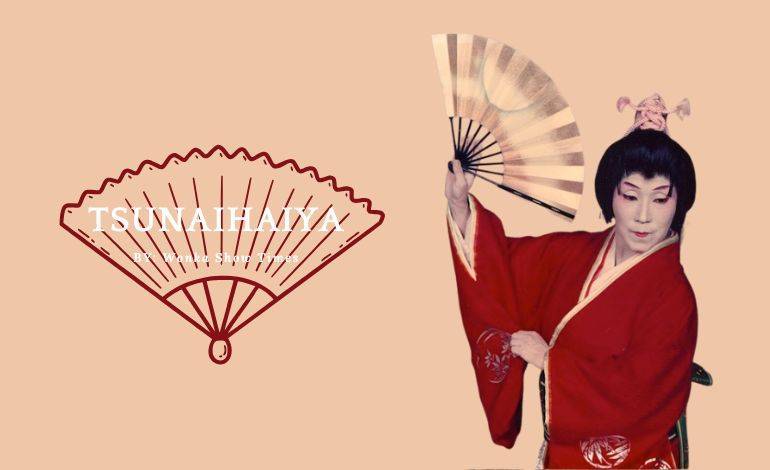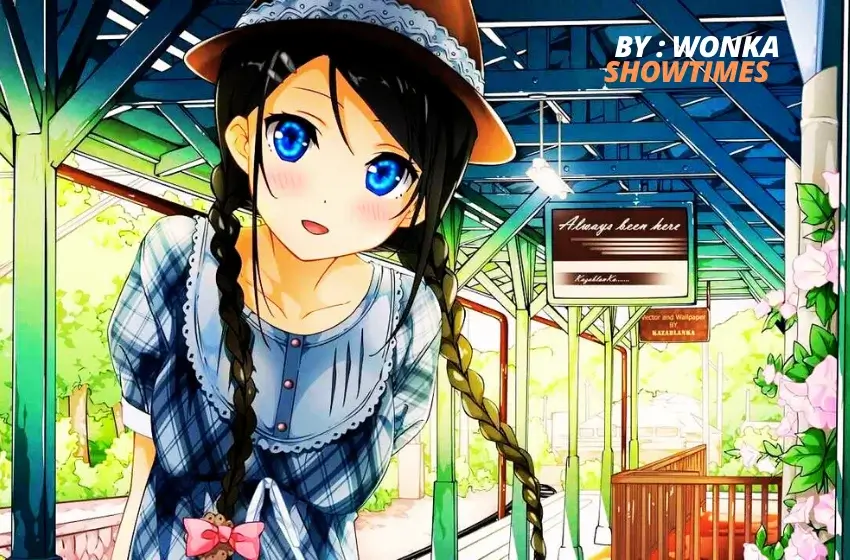
Tsunaihaiya: Cultural Synthesis, Material Culture, and Japnese Philosophy
Japan is a land known for blending ancient traditions with modern sophistication. From the way tea is served to how steel is forged, there’s a deep respect for beauty, simplicity, and purpose. Among the many fascinating terms that emerge from Japanese culture, one word that sparks curiosity is tsunaihaiya. At Wonka Show Times, we take pride in exploring cultural mysteries and meaningful traditions, and today, we dive into the origins, symbolism, and modern significance of tsunaihaiya. This term captures the essence of craftsmanship, patience, and resilience.
Though not commonly heard outside Japan, tsunaihaiya represents a concept deeply connected to Japanese artistry and philosophy. It’s more than just a word; it’s a reflection of how precision, balance, and spirit can coexist in both creation and daily life.
Understanding the Meaning of Tsunaihaiya
While tsunami doesn’t have a single, direct translation in English, it is believed to represent the idea of harmonious connection through effort. It’s a concept rooted in Japanese craftsmanship and teamwork, emphasizing the importance of uniting skill, patience, and human spirit to achieve perfection.
In traditional contexts, tsunamis were often associated with artisans, whether they were potters, swordsmiths, carpenters, or weavers. The term suggested that every stroke, cut, or fold carried not only technical mastery but also emotional energy. Each creation was a piece of the maker’s soul, tied to a rhythm of patience and respect for the material.
The Historical Origins of Tsunaihaiya
To understand tsunaihaiya, we must travel back centuries to Japan’s Edo period, a time when art, architecture, and culture flourished. Craftsmen in those days lived by unwritten codes of conduct that valued precision, harmony, and collective pride in one’s work.
The idea of a tsunami grew out of this environment. It became a word that described unity between the artisan and their craft. For blacksmiths forging swords, it meant understanding the spirit of the metal. For carpenters building temples, it meant aligning wood with nature’s rhythm. For painters, it meant letting emotion flow through every brushstroke.
The word slowly became a quiet cultural philosophy: doing your work not for fame or wealth, but for the love of doing it right.
Celebrating Tsunaihaiya Traditions
Celebrating tsunami traditions is more than just an event; it’s a vibrant expression of culture and community. These celebrations bring people together through music, dance, and colorful displays that showcase the depth of this heritage. Each festival acts as a bridge between generations, preserving stories and customs that define the community’s identity.
- Festivals feature lively music, graceful dances, and traditional clothing that highlight the beauty of the Tsunaihaiya culture.
- Local artisans present handmade crafts, preserving skills passed down through generations.
- Traditional dishes are prepared, offering flavors that carry deep cultural meaning.
- The gatherings strengthen bonds between young and old, keeping traditions alive and relevant.
More than a celebration, Tsunaiha festivals are a reminder of unity, pride, and cultural continuity. They ensure that this rich legacy not only survives but continues to flourish for generations to come.
Tsunaihaiya in Modern Japan
Even today, the concept of tsunaiha lives on, though often unspoken. You can see it in the meticulous work of sushi chefs who spend years mastering knife skills, or in the discipline of tea ceremony masters who rehearse every movement to perfection.
In modern industries such as automobile design, robotics, and architecture, the same spirit remains. Engineers and designers in Japan approach projects with a collective mindset, an echo of tsunaihaiya, where collaboration, precision, and attention to detail create products admired around the world.
Whether it’s a Toyota car, a Sony camera, or a handcrafted kimono, each carries the invisible thread of Tsunaiha: the bond between creator, team, and purpose.

The Philosophy Behind Tsunaihaiya
At its core, Tsunaiha is about connection. It bridges the gap between humans and their craft, between mind and material, between tradition and progress.
Here are some key philosophical ideas it embodies:
- Harmony: Everything must exist in balance, craftsman, tool, and material working as one.
- Patience: True mastery takes time, and haste ruins harmony.
- Respect: The artisan must respect both the art form and the materials they use.
- Continuous learning: Tsunaihaiya is not a destination but a lifelong journey of improvement.
- Community spirit: Collective effort often leads to the finest results, not individual glory.
In many ways, Tsunaiha mirrors the Japanese concept of kaizen, the continuous pursuit of betterment, but with a more emotional and spiritual undertone.
Tsunaihaiya and the Art of Living
Beyond craftsmanship, Tsunaiha also offers a guide to living. It teaches that beauty comes from effort, and fulfillment comes from meaningful work done with intention. In daily life, this could mean cooking a meal carefully, tending to a garden, or writing with focus and care.
Japanese culture often finds spirituality in everyday moments, and tsunaihaiya reminds us that even small acts can be sacred when done with mindfulness.
Imagine making a cup of tea. You don’t rush. You observe the color of the leaves, the warmth of the water, and the aroma rising with the steam. That is Tsunaiha in action, being present, intentional, and connected.
The Role of Tsunaihaiya in Japanese Design
Japanese design is celebrated for its minimalism and grace. From traditional kimonos to modern architecture, everything seems to carry a quiet intelligence. The secret lies in Tsunaiha , the commitment to unity and precision.
Designers who follow this philosophy believe that form should always reflect function, and beauty should emerge naturally from simplicity. Every detail matters. A single misplaced line or uneven texture can disturb the harmony of the whole.
This mindset has influenced everything from interior design to urban planning in Japan. Whether it’s a centuries-old temple or a cutting-edge skyscraper, the principle remains: respect the balance of nature, purpose, and craft.
Tsunaihaiya in Global Perspective
In recent years, global industries have begun to adopt Japanese concepts like kaizen, ikigai, and wabi-sabi. Now, tsunaiha is starting to gain quite a recognition among designers, educators, and leaders around the world.
Companies interested in quality and ethics see it as a model for building sustainable, purpose-driven cultures. Instead of pushing for productivity alone, Tsunaiha encourages mindful creation, where people take pride in doing things well, not just fast.
Artists in Europe and America have also begun referencing the word when discussing mindful creativity, describing it as a state of “flow” that connects intention with execution.
Lessons from Tsunaihaiya for the Modern World
The spirit of Tsunaiha offers several lessons for today’s fast-paced, digital era:
- Quality over quantity: Take time to perfect your craft. Slow work often produces deeper satisfaction.
- Connection through purpose: Whether in business or art, unite teams under a shared vision rather than competition.
- Mindfulness in motion: Be present in what you do, even in small tasks.
- Respect for materials and nature: Sustainability begins with appreciation.
- Emotional balance: Combine discipline with creativity to achieve harmony in both work and life.
In a world dominated by speed and convenience, the timeless wisdom of Tsunaiha feels like a breath of calm, an invitation to return to craftsmanship, care, and connection.
The Artistic Legacy of Tsunaihaiya
Many of Japan’s most iconic art forms, such as pottery, calligraphy, and ikebana (flower arrangement), carry the subtle influence of tsunaihaiya. Artists are taught to listen to their materials rather than control them. Clay, ink, and flowers all have their own “spirit,” and the artist’s job is to collaborate with that spirit, not overpower it.
This respect for balance and patience produces results that are not only visually stunning but emotionally resonant. A potter’s bowl or a calligrapher’s brushstroke might appear simple, yet each carries hours of practice, thought, and silent dialogue between human and material.
That’s the true beauty of Tsunaiha , it’s the art of being fully alive in your craft.
Tsunaihaiya and the Human Connection
On a deeper level, Tsunaiha reminds us that humans themselves are works in progress. Just as a craftsman shapes clay, life shapes us through effort, patience, and failure.
When we face challenges, Tsunaiha teaches us not to resist but to adapt, to work with the grain of life rather than against it. In relationships, it reminds us to build harmony through empathy and understanding.
This way of thinking turns ordinary living into a form of art, where every moment is a chance to shape something meaningful.
Conclusion
At Wonka Show Times, we believe that exploring cultural wisdom like tsunaihaiya gives us new ways to view our lives and work. This Japanese concept, rooted in craftsmanship and harmony, reminds us that true excellence isn’t born from speed or ambition; it grows from patience, respect, and purpose.
Whether you’re an artist, a business professional, or simply someone seeking balance, the lesson of Tsunaiha remains timeless: connect deeply with what you do, work with integrity, and honor the journey as much as the result.
In a noisy, rushed world, tsunaihaiya stands as a quiet voice, a reminder that beauty and fulfillment come not from perfection, but from the mindful act of creating with heart.





